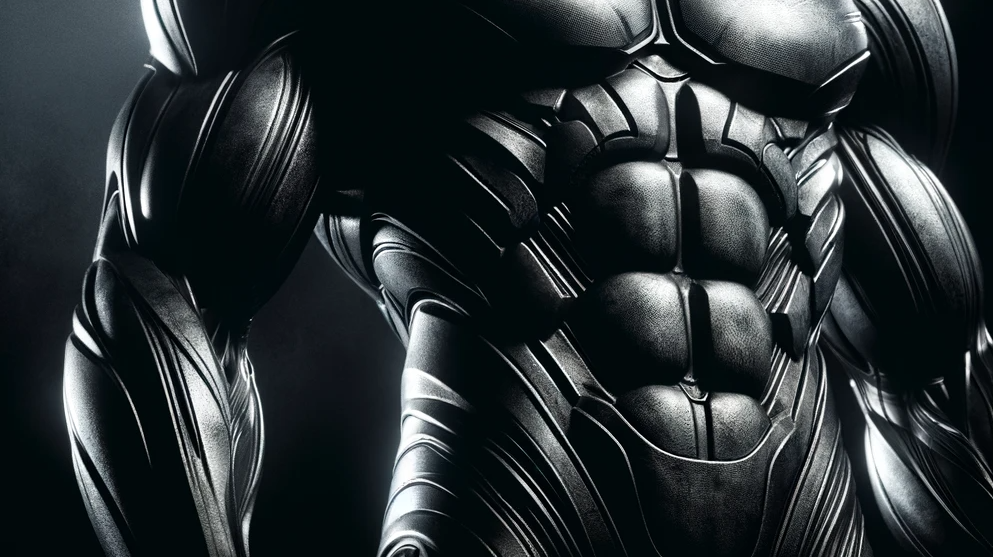Mastering the Core: Complete Guide
A Core Focus on Rectus and Transverse Abdominals
The core, particularly the rectus abdominis and transverse abdominis muscles, plays a pivotal role in stabilizing the spine, supporting limb movement, and protecting vital organs. The rectus abdominis, known for the “six-pack” look, contributes to spinal flexion and stabilization, while the transverse abdominis, acting like a corset around the spine, is key in spine protection and stabilization through internal pressure.

Weakness in these muscles can lead to postural issues, digestive problems, and inefficient breathing. Emphasizing the overlooked transverse abdominis, effective training strategies include deep breathing exercises, stomach vacuums, and compression techniques to enhance core strength, improve posture, and support internal health.
Interested in diving deeper into the Rectus and Transverse Abdominals? Take a look at our detailed guide for all the insights you need!
Serratus Anterior: Key to Shoulder Stability and Aesthetic Physique
The Serratus Anterior Muscle, often overlooked in strength training, plays a crucial role in the movement and stabilization of the shoulder blades. This muscle, located on each side of the ribs and characterized by its serrated appearance, is essential for the protraction of the scapula, supporting movements such as pushups, overhead presses, and punches. Despite its significance in enhancing shoulder mobility and contributing to a more defined physique, the serratus anterior is frequently neglected, partly due to common exercise cues that limit its engagement, leading to potential issues like forward slumped posture and winged scapula.

Training the serratus anterior can be straightforward and enjoyable, involving exercises that focus on scapular stabilization, protraction, and overhead stability. Properly incorporating such movements into a fitness routine, especially for athletes in combat sports or calisthenics, can significantly improve the muscle’s strength and appearance, potentially eliminating problems like scapular winging for those lacking in specific serratus-targeted exercises.
Curious about the Serratus Anterior? Our guide is packed with information to quench your thirst for knowledge!
Oblique Muscles: Enhancing Core Stability and Movement Efficiency
The obliques, comprising the external and internal muscles, are pivotal for a range of movements including bending, twisting, and stabilizing the core. External obliques, located on the outermost layer of the abdomen, facilitate trunk flexion, lateral bending, and rotation, originating from the lower ribs and extending down to the pelvis. Internal obliques, positioned beneath the external layer, play a similar role but with a focus on supporting the spine and pelvis alignment, as well as generating intra-abdominal pressure for lifting tasks.

These muscles are not only essential for athletic performance, offering rotational power, but are also crucial for everyday activities. Training the obliques, particularly through rotational exercises, can significantly enhance movement efficiency and prevent injuries, although caution is advised for those seeking aesthetic goals to avoid a blockier waist. Moreover, addressing oblique strength can mitigate back injuries, commonly resulting from improper twisting motions, underscoring the importance of comprehensive core training beyond mere aesthetic considerations.
Looking for more on the Oblique Muscles? Our comprehensive guide has got you covered with everything you want to know!
Diaphragmatic Breathing: Overcoming Chest Breathing for Optimal Oxygenation
The diaphragm, a critical muscle for respiration located beneath the lungs, plays a vital role in the breathing process by contracting and flattening during inhalation to expand the chest cavity and relaxing to expel air during exhalation. This automatic, rhythmical muscle movement is controlled by the autonomic nervous system but can also be influenced voluntarily through focused breathing techniques. Proper diaphragmatic breathing, as opposed to shallow chest breathing, significantly enhances oxygen intake, reduces stress by avoiding the activation of the “fight or flight” response, and improves overall physical and mental performance.

Chest breathing, characterized by limited diaphragm use and reliance on accessory respiratory muscles, can lead to a host of issues including reduced oxygen supply, increased stress, and muscle tension. Correcting this through diaphragmatic breathing exercises not only boosts oxygen levels but also enhances endurance, reduces anxiety, and improves life quality. The article underscores the importance of consciously practicing diaphragmatic breathing throughout daily activities to strengthen the diaphragm, ensure efficient oxygenation, and promote health and well-being.
Eager to learn more about the diaphragm? Check out our guide for a deep dive into the subject!
Conclusion
This comprehensive collection of information takes a deep dive into the fundamental aspects of core strength. It sheds light on the vital roles played by different abdominal muscles, such as the transverse and rectus abdominals, the often overlooked serratus anterior, and the dynamic duo of the internal and external obliques. Each section explores the unique functions, importance, and targeted training methods for these muscles, highlighting their impact not only on physical appearance but also on overall health, stability, and performance.
Furthermore, it examines the significance of proper diaphragmatic breathing, offering valuable insights into the benefits of breathing techniques for optimizing oxygen intake, reducing stress, and enhancing physical and mental performance. By connecting the dots between muscle function, breathing techniques, and overall well-being, this comprehensive overview provides actionable advice for improving physical health and athletic performance through focused training and mindful practices. Find more articles like this on our socials!

